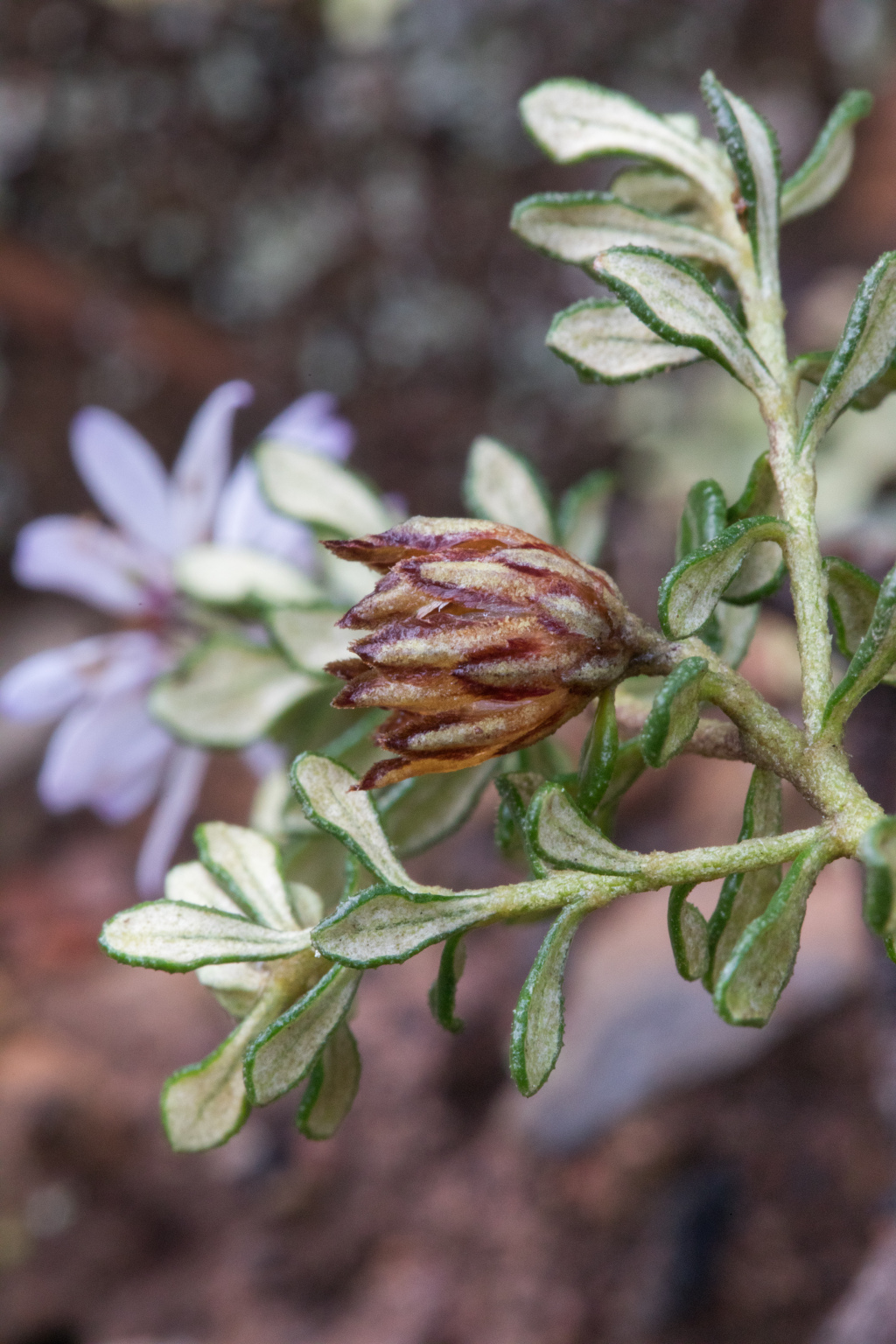Olearia iodochroa
(F.Muell.) F.Muell. ex Benth.Usually a rounded shrub to 1(–1.5) m high; branchlets and leaf undersurfaces densely covered by a mat of whitish hairs, often slightly viscid. Leaves alternate, subsessile, narrowly obovate to obtrullate, 3–12 mm long, 1.5–3.5 mm wide, entire, or rarely, with 1–3 shallow subapical teeth; upper surface glabrous, dark green, usually slightly scabrous; lower surface whitish; margin somewhat thickened or recurved. Capitula terminal, subsessile, solitary or few together, 15–30 mm diam.; involucre c. conical, 4.5–6 mm long; bracts 3–4-seriate, graduating, pubescent, with resin droplets, margin fimbriate, purplish. Ray florets 7–15, mauve to white, ligules 4–9 mm long; disc florets 5–16, purplish, cream or yellow. Cypsela cylindric, 3–4 mm long, not or obscurely ribbed, dark purplish beneath dense, pale silky hairs; pappus bristles pale, c. 5 mm long. Flowers Jun.–Oct.
VVP, GipP, EGL, EGU, HSF, HNF, MonT, VAlp. Also NSW. Confined in Victoria to dry, rocky, elevated country in the further east (e.g. upper Tambo River valley, Wulgulmerang, Suggan Buggan, Mt Tingaringy, upper Genoa River).
Walsh, N.G.; Lander, N.S. (1999). Olearia. In: Walsh, N.G.; Entwisle, T.J., Flora of Victoria Vol. 4, Cornaceae to Asteraceae, pp. 886–912. Inkata Press, Melbourne.
 Spinning
Spinning
